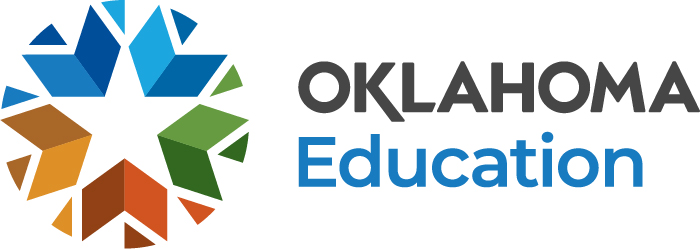Secondary Transition
The Oklahoma state policy requires transition services to be addressed and in effect not later than the beginning of the student's ninth grade year or upon turning 15 years of age, whichever comes first, or younger, if determined appropriate by the IEP team, and updated annually. Transition services are crucial in supporting students as they plan for post-school goals. Transition plans assist students in meeting their post-school goals, such as: gainful employment, post-secondary education or training, independent living, military, and/or group living. These plans are designed to meet individual needs as they progress through school.
IEP Requirements
Student Participation
Transition Services must be addressed on the student's IEP no later than the beginning of the student's ninth grade year or upon turning 15 years of age, whichever comes first, or younger, if determined appropriate by the IEP team, and updated annually.
The IEP team should actively involve the student in developing their IEP. If the student does not attend, steps must be taken to ensure that the student’s strengths, preferences, interests, and vision are considered as part of the IEP development. The IEP will clearly outline what the student wants to do when they have completed high school, where they want to learn and work, how they want to live (e.g., independently, with family, in a group home), and how they want to take part in the community (e.g., transportation, recreation, etc.).
Agency Participation
When IEP meetings involve transition planning, the school district must invite a representative of any other agency likely to be responsible for providing or paying for transition services. If the agency representative did not attend, the IEP team should document their input. Agencies include, but are not limited to:
- Department of Rehabilitation Services
- Department of Human Services
- Higher education institutions
- Oklahoma Works
- Independent living centers
- Employment Security Commission
- A statement of interagency responsibilities and linkages is included in the IEP, when appropriate.
Postsecondary Goal
The IEP must include an appropriate measurable post-secondary goal based upon age appropriate transition assessments related to training, education, employment, and, where appropriate, independent living skills.
To assist schools in developing appropriate and meaningful transition plans for young adults with disabilities that not only assist the young adult in meeting his or her postsecondary goals, but also help maintain compliance with federal regulations, there are several resources available.
The National Technical Assistance Center on Transition (NTACT), a United States Department of Education (USDE), Office of Special Education Programs (OSEP) funded center, has developed several resources to aid IEP teams in developing transition plans.
Transfer of Rights
Procedural safeguard rights associated with IDEA transfer to the student at the age of majority, which is 18 years of age. The student’s IEP team should inform the student and parent on or before the 17th birthday that this change will occur. Change of rights may also occur when a student gets married or becomes legally emancipated. The IEP team must plan ahead, and assist the student and the parent in understanding and preparing for the transfer of rights that will occur.
Secondary Transition Services
Transition Services
The student's needed transition services are part of a long-range plan that coordinates the last years of high school (or earlier when appropriate) and the years immediately following high school. The services are focused on improving the academic and functional achievement of the student with a disability to facilitate movement from school to post-school activities, including post-secondary education, vocational education, integrated employment (including supported employment), continuing and adult education, adult services, independent living or community participation. The IEP team must indicate the services that will be provided to the student through implementation of the IEP (e.g., instruction, community experiences, employment and other post-school adult living objectives, daily living skills, and/or functional vocational evaluation, if appropriate).
Course of study
The student's course of study, which must be updated annually, should relate directly to the student's post-secondary goals (e.g., family and consumer science classes, instruction in daily living skills, functional math, and community-based work experience, industrial arts classes, college preparation courses, etc.). The course of study statement should address the classes, experiences, and activities that will be meaningful to the student's future, motivate the student to complete his or her education, and support post-school outcomes.
Student Summary of Performance
The school district must provide a Summary of Performance (SOP) to students who are graduating from high school with a regular diploma, or to students who are leaving high school due to exceeding the age of eligibility for a free appropriate public education (This includes students who are eligible for special education through 21 years of age). The SOP includes a summary of the student’s academic achievement and functional performance, progress toward meeting post-secondary goals, and recommendations on how to assist the student in meeting post-secondary goals. Mention of any modifications or accommodations that will enable the student to meet his or her goals is instrumental in continuing the student’s success.
Additional Resources
Secondary Transition Guidance Briefs
General Resources
- Indicator 14 Survey Protocol
- Decreasing Dropout Rates for Minority Youth with Disabilities
- Elementary School Transition Planning and Resource List
- Elementary School Transition Planning and Resource List Spanish Version
- Middle School Transition Planning and Resource List
- Middle School Transition Planning and Resource List Spanish Version
- High School Transition Planning and Resource List
- High School Transition Planning and Resource List Spanish Version
- Oklahoma Association on Higher Education and Disability
- Heath Resource Center at the National Youth Transitions Center
- Think College-College Options for People with Intellectual Disabilities
- Transition Services Resource Guide
- Postsecondary Transition Guide


